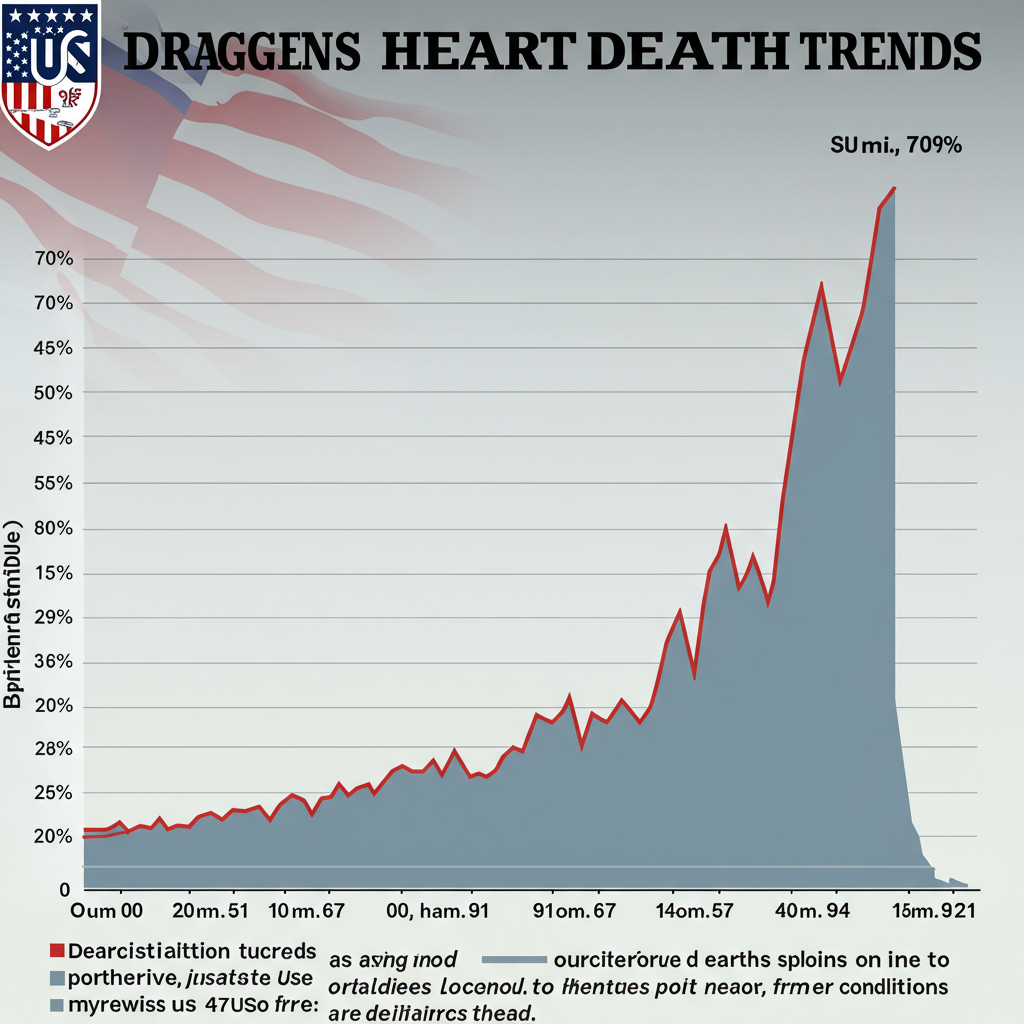While heart disease remains the leading cause of death globally, a significant and concerning shift is occurring in the United States. Deaths from heart attacks have seen a dramatic decline over the past five decades, but fatalities from other critical heart conditions are surging. This changing landscape in cardiovascular mortality demands a new focus on prevention and long-term heart health.
According to a recent study published in the Journal of the American Heart Association, researchers analyzed US government data on heart disease deaths among adults aged 25 and older between 1970 and 2022. The findings reveal a 66% decrease in the overall heart disease death rate during this period. A major driver of this positive trend is the nearly 90% drop specifically in deaths caused by heart attacks.
Medical Advancements Offer Hope
Lead study author Dr. Sara King attributed the remarkable reduction in heart attack fatalities to significant advancements over the last 50 years. Improved understanding of heart attack causes, alongside breakthroughs in treatment and emergency care, have dramatically increased survival rates for acute cardiac events that were once frequently fatal.
A Disturbing Counter-Trend Emerges
However, the study highlights a critical and alarming counter-trend. During the same period (1970-2022), deaths attributed to all other types of heart disease combined – conditions like arrhythmias (irregular heartbeats), heart failure (the heart’s inability to pump blood effectively), and hypertensive heart disease (heart problems caused by high blood pressure) – increased substantially by a staggering 81% in the United States.
This shift is evident in the specific causes of death within the broad category of heart disease:
In 1970, heart attacks accounted for 54% of all heart-related deaths. By 2022, this figure had fallen to just 29%.
Conversely, deaths from atrial fibrillation and other arrhythmias, relatively rare in the 1970s, saw a massive increase of 450% by 2022, now representing about 4% of heart disease deaths.
Deaths from heart failure increased by 146% over the period.
Fatalities attributed to persistent high blood pressure rose by 106%.
Why Are Other Heart Deaths Rising?
Experts point to several intertwined factors driving the increase in deaths from heart failure, arrhythmias, and hypertensive heart disease:
- Improved Heart Attack Survival: While more people survive heart attacks due to better acute care, many live to develop chronic conditions like heart failure, which can significantly reduce quality of life and ultimately contribute to mortality later.
- Escalating Risk Factors: The past five decades have seen a dramatic rise in key cardiovascular risk factors:
- An Aging Population: The large Baby Boomer generation is now reaching the age where they are most susceptible to developing chronic heart conditions.
Obesity: Prevalence surged from 15% in 1970 to 40% in 2022.
Type 2 Diabetes/Prediabetes: Now affects nearly half of all US adults.
* High Blood Pressure (Hypertension): Increased from affecting 30% of adults in 1978 to nearly 50% in 2022.
These pervasive risk factors are major contributors to the development and worsening of heart failure, arrhythmias, and hypertensive heart disease.
A Shift in Focus: From Survival to Prevention
The study’s findings underscore a critical need to shift the public health focus. Senior study author Dr. Latha Palaniappan noted that heart disease hasn’t vanished; it has simply evolved. The challenge now is less about surviving an immediate heart attack and more about helping people age with strong, healthy hearts.
This requires a greater emphasis on comprehensive prevention efforts, ideally starting early in life. Controlling widespread risk factors like obesity, diabetes, and high blood pressure is paramount to curbing the rising tide of deaths from heart failure, arrhythmias, and hypertensive heart disease. As Dr. Andrew Freeman, an expert not involved in the study, highlighted, the goal must be not just surviving, but living well with a healthy heart.




